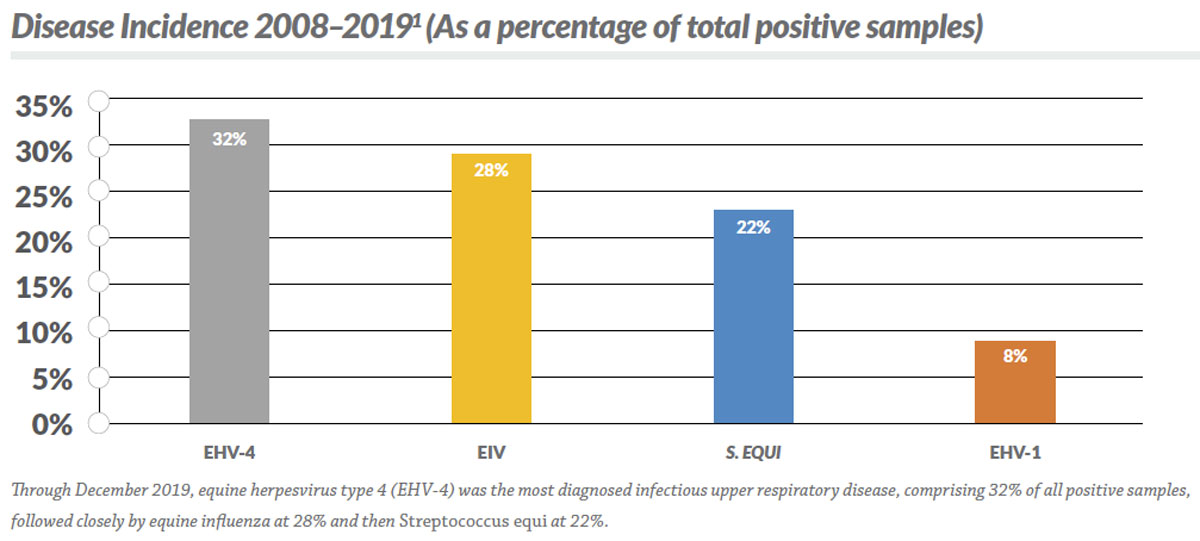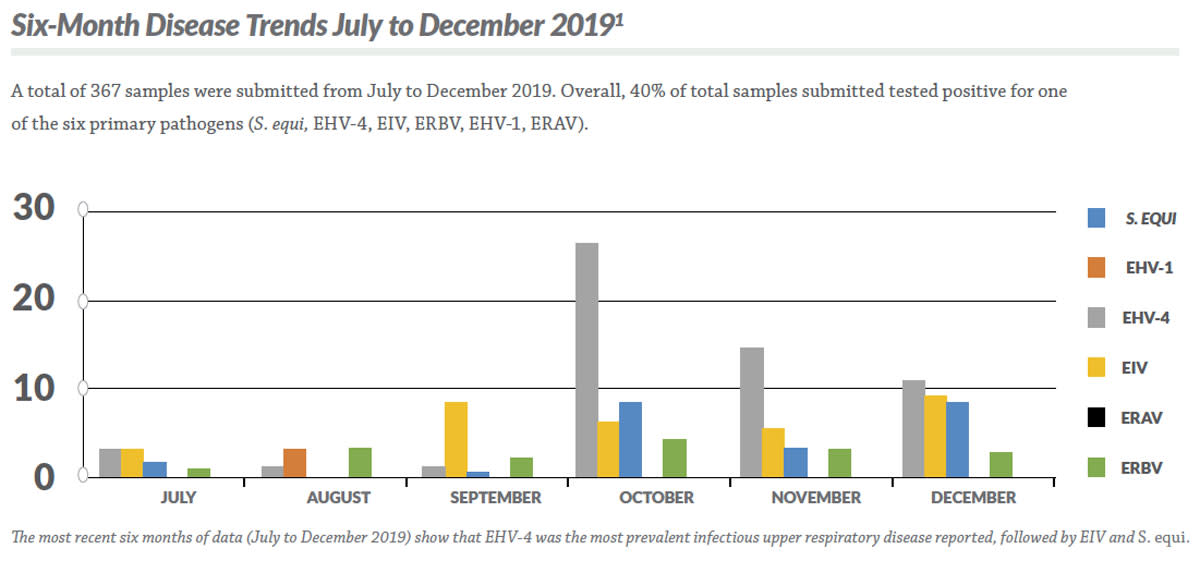
The Merck Animal Health Equine Respiratory Surveillance Program began in 2008. The comprehensive, ongoing national surveillance study managed by Merck Animal Health in partnership with University of California, Davis (UC Davis).
Download the Merck Newsletter Here
More than 9,000 samples have been collected since the biosurveillance program began nearly 12 years ago. Of those, 32% have returned positive for one of six pathogens tracked, including equine herpesvirus types 1 and 4 (EHV-1, EHV-4), equine influenza virus (EIV) and Streptococcus equi, which have been tracked from the inception of the program, and ERAV and ERBV, which were added in 2012.

Merck recently released findings from the last six months of 2019. A total of 367 samples were submitted from July to December 2019. Overall, 40% of total samples submitted tested positive for one of the six primary pathogens (S. equi, EHV-4, EIV, ERBV, EHV-1, or ERAV).

Those cases from the last six months of 2019 were broken down this way in a demographic summary:

The four-fold purpose of this surveillance program is:
- To provide a valuable diagnostic tool to participating Merck Animal Health customers to assist in obtaining an accurate and timely diagnosis during an acute respiratory disease outbreak so they can provide optimal treatment, quarantine and vaccination strategies to their clients and patients.
- To provide the horse industry with a better understanding of the prevalence and epidemiology of these respiratory pathogens.
- To identify and monitor the current circulating strains of major equine respiratory pathogens.
- To evaluate the efficacy of current vaccination protocols.
For more information on this program, check out Episode 16 of the Disease Du Jour podcast.
You can also read the 2019 article that highlighted 10 years of research from this program.








